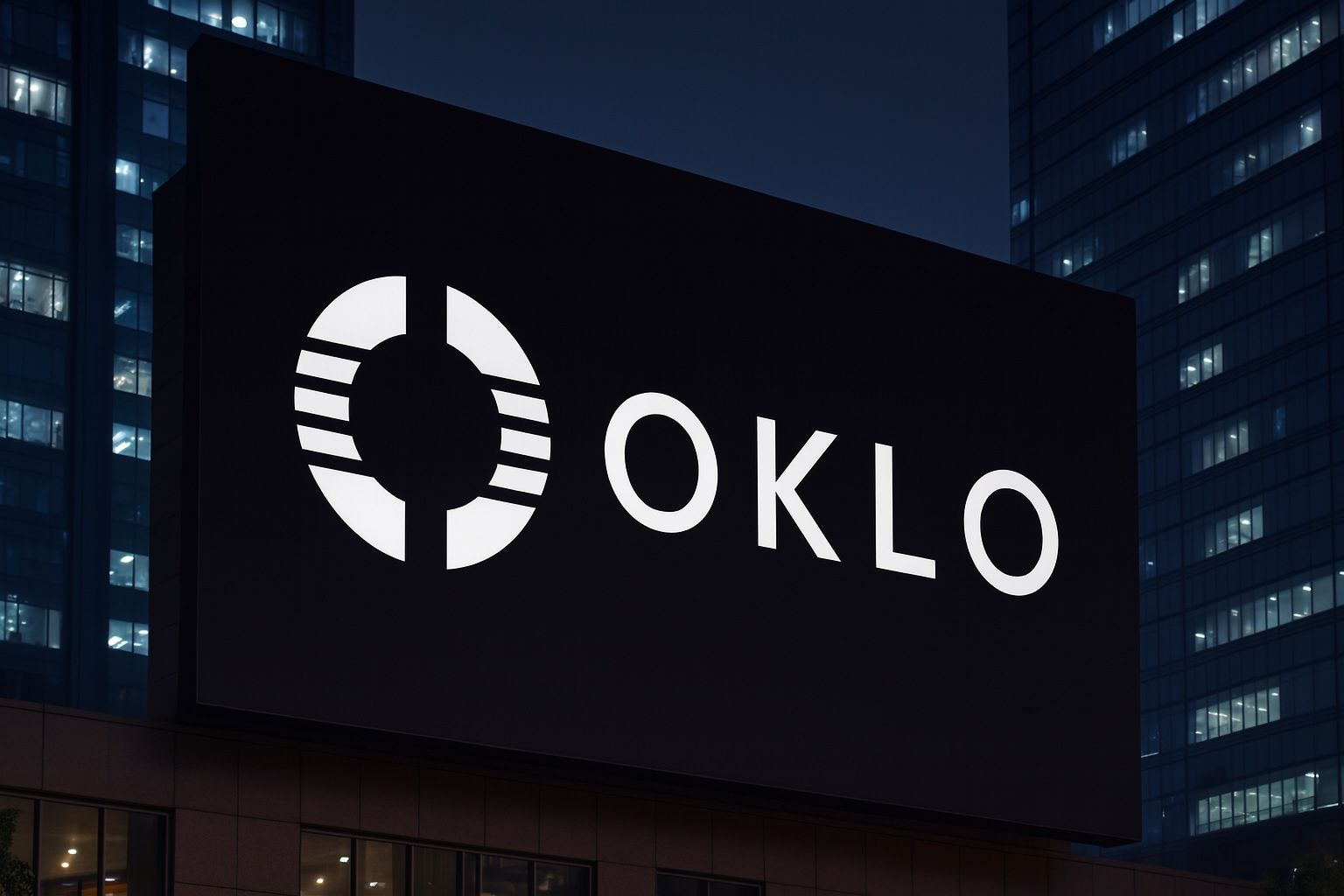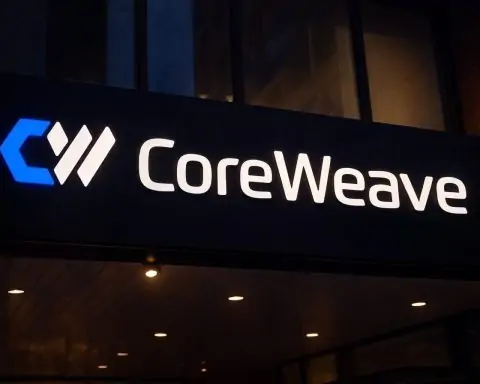- Stock on a Tear: Oklo (NASDAQ: OKLO) shares have rocketed this year, surging roughly 500% in 2025 to hit multi-month highs (above $160) before pulling back. By Oct 21, Oklo was trading around $139 – down about 12% from the prior close of $159.05 – as investors digested recent news [1] [2].
- $2 Billion Fuel Deal: On Oct. 17 Oklo announced a landmark partnership with Europe’s newcleo (and Swedish firm Blykalla) to build advanced nuclear fuel factories in the U.S. Newcleo plans to invest up to $2 billion (via a special fund) into joint fuel-fabrication projects, with Blykalla considering co-investment and fuel service agreements [3] [4]. Oklo CEO Jacob DeWitte hailed the deal as a way to “eliminate a legacy liability while creating an abundant near-term fuel source,” using surplus plutonium to jump-start reactor deployment [5].
- Government Backing: Oklo has been hand-picked for U.S. DOE programs under the Trump administration’s nuclear agenda. In late September it was selected for both the Advanced Nuclear Fuel Line pilot program (to build fuel-fabrication facilities) and the Reactor Pilot program (fast-tracking its microreactor project) [6] [7]. Interior Secretary Doug Burgum called the fuel partnership “yet another win for President Trump’s ‘American Energy Dominance Agenda’” [8]. Oklo also reports that it completed an NRC pre-application assessment for its first Aurora reactor (at Idaho National Lab) and plans to file a combined license application before year-end [9] [10].
- Analyst Views & Forecasts: Wall Street opinions are split and cautious. The 20 analysts covering Oklo have a consensus rating of “Hold”, with an average 12-month price target around $90–$98 (implying 30% downside) [11]. Notably, targets range wildly: Wedbush’s Daniel Ives recently set a $150 target [12] and Canaccord initiated at $175, while others (Goldman, UBS) are much lower (e.g. $65–$117) [13] [14]. Major banks have warned Oklo is overvalued; for example, a Bloomberg report cautioned that nuclear stocks may be “running ahead of reality” after Oklo’s huge rally [15]. Stock-data sites echo this caution, showing the average price target is well below the current price [16] [17].
- Sector Context – Nuclear Renaissance: Oklo’s boom comes amid a broader nuclear energy revival. Leading tech and industrial firms (including Amazon, Google, Meta and Dow) recently backed a pledge to “triple global nuclear capacity by 2050” [18]. Small modular reactors (SMRs) like Oklo’s are viewed as key to powering energy-hungry data centers and AI computing. Indeed, other advanced nuclear companies have also seen big gains in 2025 (NuScale’s stock roughly tripled), reflecting optimism that advanced reactors can provide reliable, clean baseload power [19] [20].
- Expert Caution: Not everyone is convinced this rally is sustainable. BloombergNEF nuclear analyst Chris Gadomski compared today’s SMR hype to the dot-com bubble, warning “there’s a lot of cheerleading happening, but the amount of capital that you need to cross the finish line is huge.” [21] He noted that Oklo and its peers are years away from any revenue, so the massive current valuation rests on future promises.
Stock Performance and Recent Trading
Oklo’s stock price has been extremely volatile. In 2025 the share price climbed from under $10 (at IPO) to well over $160 by mid-October [22]. Volume was heavy as investors piled in, driven by excitement around AI data centers and nuclear energy tailwinds. By Oct. 20 it closed at $159.05, down about 2.7% from the day before [23]. In the session on Oct. 21 it dropped sharply: by midday trading the stock was around $139.44 (a 12.3% drop from the prior close) [24]. (Later in after-hours it recovered slightly to ~$139.60 [25].) This pullback came amid profit-taking after the fuel-deal announcement and sector rotation. Despite the dip, Oklo remains up roughly 650–700% year-to-date [26] [27].
Strategic $2B Fuel Partnership
On Oct. 17, 2025, Oklo announced a major strategic deal: it will team up with France’s newcleo and Sweden’s Blykalla to build U.S. facilities for advanced nuclear fuel. Under the agreement, newcleo will invest up to $2 billion into fuel fabrication plants, with Blykalla likely co-investing and buying fuel services [28] [29]. This is one of the largest joint nuclear fuel initiatives in recent years. As Oklo’s CEO Jacob DeWitte explained, using surplus plutonium as reactor fuel “can accelerate the deployment of multiple gigawatts of advanced reactors and serve as a bridge fuel until uranium enrichment and recycling scale up” [30]. The aim is to create a transatlantic “closed-loop” fuel cycle: the partners will co-invest in and co-locate fuel fabrication facilities under U.S. oversight, reusing waste plutonium in line with security rules [31] [32]. This deal strengthens Oklo’s position in the nuclear supply chain and directly aligns with the U.S. goal of energy independence (as one Interior Department official noted, it’s a win for the “American Energy Dominance Agenda” [33]).
Government Support and Regulatory Progress
Oklo’s recent gains are not just hype – the company has benefitted from concrete federal backing. In late September, the U.S. Department of Energy selected Oklo for two Trump-administration pilot programs [34] [35]. These include the Advanced Nuclear Fuel Line program (which will fast-track the construction of Oklo’s fuel production lines) and the Reactor Pilot Program (which lets Oklo’s demo reactor projects proceed under DOE authority, bypassing some NRC delays) [36] [37]. As a result, Oklo has effectively received a “golden ticket” to speed its licensing and construction, according to analysts [38].
Oklo has also made headway with regulators. In July it announced successful completion of the U.S. Nuclear Regulatory Commission’s readiness assessment for its first Aurora reactor at Idaho National Lab [39]. Jacob DeWitte said this was a “good signal” that Oklo is on track, with no major gaps found. The company says it will submit the first phase of its reactor license application (COLA) by year-end 2025 [40]. The NRC itself is moving to make advanced reactor licensing easier (cutting fees and streamlining reviews), so Oklo is working under favorable conditions [41]. Separately, Oklo announced it will build a $1.68 billion nuclear waste recycling plant in Tennessee (to recover fuel from government-owned waste) [42], further securing its role in the fuel supply chain.
Analyst Commentary and Forecasts
Wall Street analysts are watching closely but not unanimous. The consensus among 20 surveyed analysts is a modest “Hold”, with the average 12-month price target near $90–$100 (about 30% below the current trading level) [43] [44]. In fact, MarketBeat reports an average target of ~$98 (downside ~29%) [45], and StockAnalysis.com shows a $91 average [46]. These middling targets reflect concerns that Oklo’s valuation has raced far ahead of any revenue. Major banks share this caution: Bank of America and Goldman Sachs have downgraded Oklo (to Neutral), noting that even with strong government support, the company has no revenue and high execution risk [47].
However, some analysts remain bullish on the long term. Wedbush’s Daniel Ives recently initiated coverage with a $150 price target [48], and Canaccord’s George Gianarikas set a $175 target, calling Oklo a “new nuclear age” leader. By contrast, more conservative forecasts include UBS at $65 and BofA’s Dimple Gosa at $92 [49] [50]. This wide spread – from $65 all the way to $175 – highlights the uncertainty. In practice, Oklo’s stock had begun October trading near $150, so even the highest targets imply moderate gains from recent levels.
In trade, many investors were taking some profits late October. Volume on Oct. 20 fell about 6 million shares from the prior day while the price dipped [51], suggesting short-term selling. Still, street sentiment remains mixed: 14 firms rate it a Buy or Strong Buy, while others advise caution. In a recent tech-stock analysis, one commentator called Oklo a potentially “millionaire-maker” stock given its 1,927% rally over the past year [52], but also warned that “it’s an early stage start-up… with no commercial operations for several years” – making it very high-risk at these levels [53].
Nuclear Renaissance and Sector Drivers
Oklo’s story is entwined with a broader nuclear revival. After decades of stagnation, nuclear power is gaining urgency. Governments and corporations are touting it for decarbonization and energy security: for example, a coalition of major tech and industrial firms (Amazon, Google, Meta, Dow, etc.) recently endorsed a pledge to “triple global nuclear capacity by 2050” [54]. These companies view SMRs as key to supplying reliable, 24/7 power for data centers, AI clusters and heavy industry (the WNN report noted that AI demand and data-center growth have made SMRs a hot area [55]).
In this climate, investor interest in Oklo and its peers has exploded. According to analysts, nuclear and SMR stocks have broadly rallied in 2025 – Oklo’s 500% surge coincided with similar jumps in peers (NuScale up ~300%, others also climbing) as markets anticipated a future “nuclear renaissance” [56]. Some commentators even label Oklo “the Tesla of nuclear” given its Silicon Valley backers (OpenAI’s Sam Altman is a notable supporter) and its AI-focused pitch [57] [58]. But the hype has drawn scrutiny. As BloombergNEF’s Chris Gadomski put it in the Financial Times, today’s SMR frenzy echoes the dot-com bubble of 20 years ago – there is “a lot of cheerleading,” he warned, but building actual commercial reactors will require enormous capital [59].
In sum, Oklo sits at a crossroads: its stock has soared on the promise of advanced nuclear meeting future energy needs, but it also carries the weight of sky-high expectations. The company has clear catalysts – from massive partnerships and DOE contracts to regulatory wins – yet remains years from revenue. Investors and analysts alike are watching to see if Oklo can turn today’s optimism into real results or if this rally peters out.
Sources: News reports and company releases from Oct 2025 [60] [61] [62] [63]; real-time stock data [64] [65]; analyst outlooks [66] [67] [68]; and commentary by industry experts [69] [70].
References
1. ts2.tech, 2. www.reuters.com, 3. oklo.com, 4. world-nuclear-news.org, 5. investorsobserver.com, 6. www.reuters.com, 7. ts2.tech, 8. world-nuclear-news.org, 9. oklo.com, 10. oklo.com, 11. www.marketbeat.com, 12. www.quiverquant.com, 13. www.quiverquant.com, 14. stockanalysis.com, 15. ts2.tech, 16. www.marketbeat.com, 17. stockanalysis.com, 18. world-nuclear-news.org, 19. ts2.tech, 20. world-nuclear-news.org, 21. investorsobserver.com, 22. ts2.tech, 23. stockinvest.us, 24. www.reuters.com, 25. stockanalysis.com, 26. ts2.tech, 27. investorsobserver.com, 28. oklo.com, 29. world-nuclear-news.org, 30. investorsobserver.com, 31. oklo.com, 32. world-nuclear-news.org, 33. world-nuclear-news.org, 34. www.reuters.com, 35. ts2.tech, 36. ts2.tech, 37. www.reuters.com, 38. ts2.tech, 39. oklo.com, 40. oklo.com, 41. oklo.com, 42. www.reuters.com, 43. www.marketbeat.com, 44. stockanalysis.com, 45. www.marketbeat.com, 46. stockanalysis.com, 47. ts2.tech, 48. www.quiverquant.com, 49. www.quiverquant.com, 50. stockanalysis.com, 51. stockinvest.us, 52. www.nasdaq.com, 53. www.nasdaq.com, 54. world-nuclear-news.org, 55. world-nuclear-news.org, 56. ts2.tech, 57. ts2.tech, 58. ts2.tech, 59. investorsobserver.com, 60. oklo.com, 61. world-nuclear-news.org, 62. www.reuters.com, 63. oklo.com, 64. www.reuters.com, 65. stockanalysis.com, 66. stockanalysis.com, 67. www.marketbeat.com, 68. www.quiverquant.com, 69. investorsobserver.com, 70. world-nuclear-news.org







